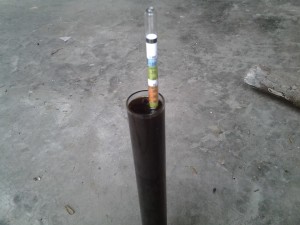
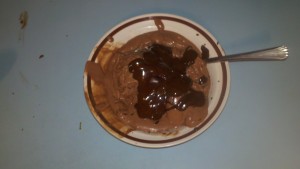 Before I got interested in homebrewing, I had a life-changing experience with a stout ice cream. The beer was used in a ripple mixed into vanilla ice cream. I had never thought of using beer in ice cream before that point.
Before I got interested in homebrewing, I had a life-changing experience with a stout ice cream. The beer was used in a ripple mixed into vanilla ice cream. I had never thought of using beer in ice cream before that point.
A few years ago, my wife decided to take up making ice cream as a hobby. Being an ice cream lover, there is no way I was going to protest. Shortly after she began, she found a wonderful book: The Perfect Scoop. One of the recipes in the book is for Guinness-Milk Chocolate Ice Cream. While the original version is good, we changed a few things to really make this one of my favorite ice creams.
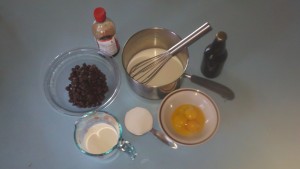 Dark Chocolate Porter Ice Cream
Dark Chocolate Porter Ice Cream
7 ounces dark chocolate (we like the Trader Joe’s 72% Bittersweet), chopped fine
1 cup whole milk
1/2 cup sugar
Pinch salt
4 large eggs yolk
1 cup heavy cream
3/4 cup homebrewed porter
1 teaspoon vanilla extract.
- Warm the milk enough to dissolve the sugar and salt in a pan on the stove.
- Whisk the egg yolks in a separate bowl and slowly add the warmed milk mixture while whisking the eggs vigorously. Pour back into the original pan.
- Stir the mixture, while heating, until thickened.
- Strain a small amount of the egg mixture into a bowl containing the chocolate. Begin with a small amount and add only enough to melt the chocolate. Once the chocolate is melted, add the mixture in small additions to keep the base smooth.
- Once smooth, whisk in the heavy cream, then the beer & vanilla.
- Freeze according to your ice cream maker’s instructions.
Warnings
- When melting the chocolate, do not add all the liquid at once. We have had problems with the chocolate forming particles which do not re-integrate and result in a grainy final ice cream.
- Same problem as #1 can occur if you add the heavy cream or beer too quickly, although we have had fewer problems with adding the beer & vanilla quickly.
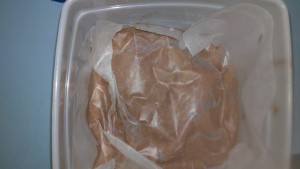 Tips
Tips
- Another option for the beer to include is a good Russian imperial stout. If you want to do a stout ice cream, I prefer a stronger stout than Guinness.
- For a firmer ice cream, transfer the ice cream to a freezer-safe container. Push wax paper down against the surface of the ice cream, and place in the freezer for several hours.
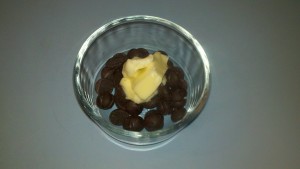 Topping
Topping
- 2 ounces dark chocolate
- 1 Tablespoon butter
Place both chocolate and butter in a small bowl. Microwave in 30-second increments and mix until smooth. Once the butter is melted, use shorter increments. Spoon over ice cream and enjoy.


